Rock and Mineral Identification
Believe it or not, this is something I do quite often. As the Director of the Rutgers GeologyThe science that deals with the dynamics and physical history of the earth, the rocks of which it is composed, and the physical, chemical, and biological changes that the earth has undergone or is undergoing. Museum, we offer rock and mineral identification events throughout the year. And more often than not, someone will walk through the door, rock in hand, wanting to speak to someone who might be able to ID it for him or her. I do get stumped at times but I am also able to tell them something about the item in question, and sometimes people get very upset with what I tell them (mostly because it is never a meteorite).
For as long as I can remember, I loved looking at the rocks around me up close so that I could see the details in them. This only increased in frequency after I became a geologist. So of course I was checking out the rocks under my feet and on the sides of the mountains during my hikes. I was concentrating on not falling and telling myself to keep going to closely inspect the rocks, but my sense was that I was walking through low-moderate grade metamorphic rocks. This was confirmed when I stumbled upon a rock quarry on my way to another site.
As my family will tell you, I can’t pass up looking through a good rock pile, and I was one happy geologist as I sifted through the rocks on the side of the road for more clues about the geology. So let me show you what I found.
First a little background on metamorphic rocks. These are formed through the application of heat and pressure without melting the rock. As the rock is subjected to increased heat and pressure it will further change into new types of metamorphic rocks.
For mudstones, the typical progression of metamorphic rocks is as follows:
Slate → Phyllite → Schist → Gneiss
The pressure and heat required to transform the rocks into the next step increases as you go from slate to gneiss. Therefore, slate is a low-grade metamorphic rock, and gneiss is a high-grade metamorphic rock. Check out the pictures to see what some of these look like.
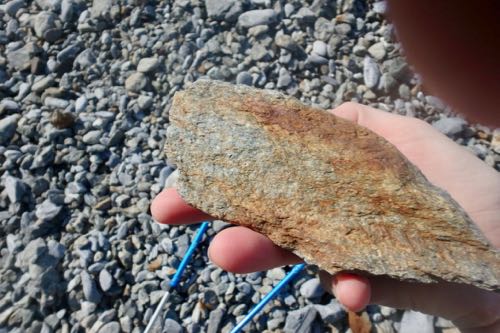
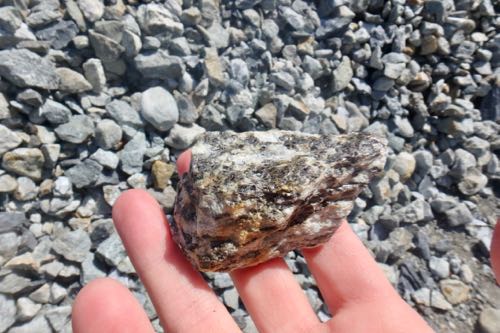
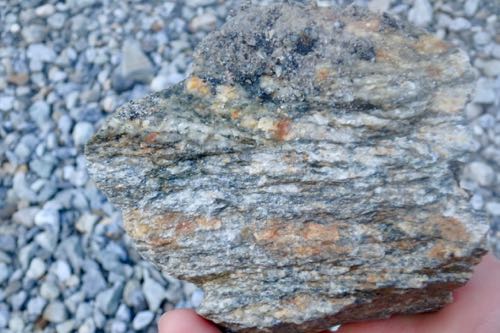
On my hike I only observed phyllite and a small amount of schist, meaning that those rocks only went through low to moderate heat and pressure to transform. But since I found the high-grade gneiss in the pile of rocks, I suspect if I had kept hiking farther into the mountains, I would have eventually found it. To a geologist this makes sense because we would expect the gneiss, etc. in the interior of the mountain, where the highest temperatures and pressures are during the formation of the mountain.
I also found a ton of the mineral quartz. A mineral collector friend had told me to keep an eye out for Alpine Quartz while I am here since it is a well-known collectors piece from the area. I found rocks that seemed to be composed entirely of quartz, quartz veins that were formed by hydrothermal fluids, and poorly formed quartz clusters. I will keep my eye out for better samples as my expedition progresses but the most spectacular specimen can be seen on display at various tourist locations and for sale in shops.
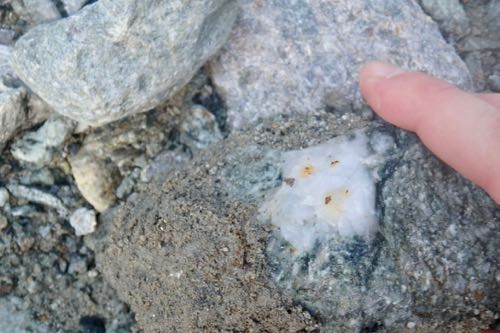
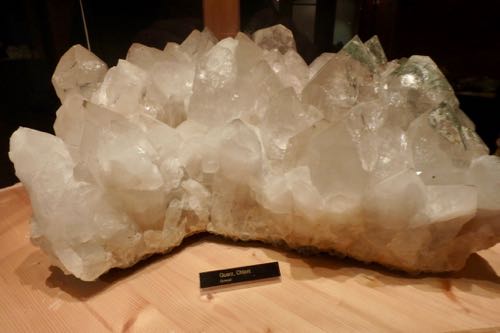
This gray rock is limestone and it is what makes up majors areas of the mountain that I visited. Apparently you can also find marble nearby, which is metamorphosed limestone. Some of the other hikers I met on the trail told me they got to explore a marble quarry not too far off the trail, but I missed it. The veins running through the gray rock are calcite. They were deposited through precipitation as water rich in minerals traveled through the cracks leaving the minerals behind.
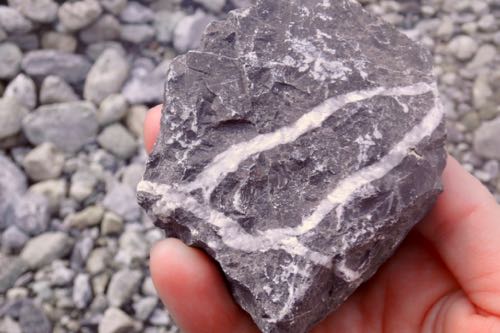
More about the formation and geologic history of the alps once I have better internet connection.
PolarTREC Poppy
Poppy is checking out the beautiful Alpine quartz point we picked up for a friend back home at a local shop.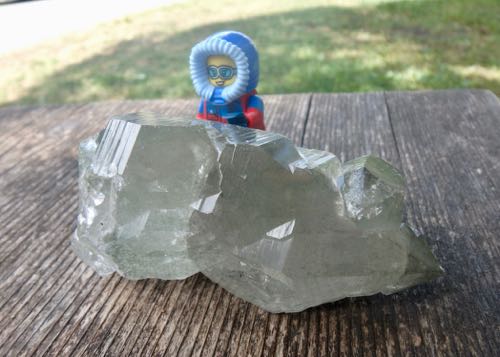
Daily Haiku
Heat and pressure meet
to form spectacular heights
Delight of many


Comments